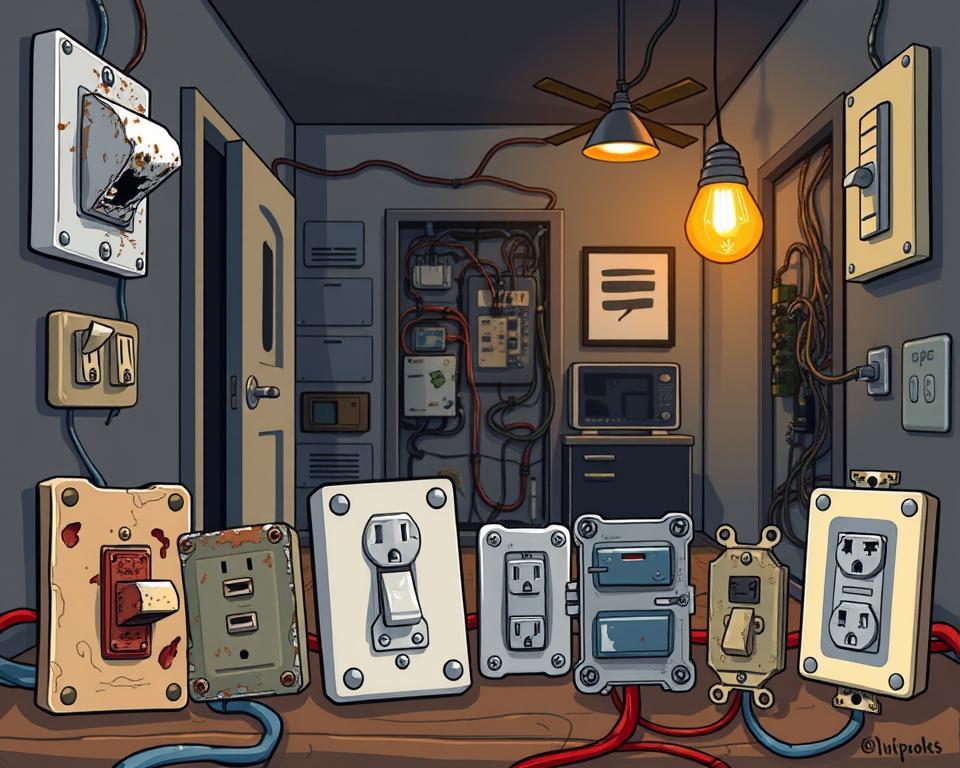Book a Tribute Band Miami for Events & Parties
“Music can change the world because it can change people.” — Bono. This directory brings that idea to your next gathering by streamlining how you find and book live music.
Find current availability, easy-to-read starting prices, and instant access to quotes for your event across the United States. With private party DJ Miami, you can see who’s available Miami today, including reviews, videos, and example setlists to help you compare bands Miami in one place.
Let us know about your wedding, business function, or private celebration and receive multiple quotes. Plenty of acts provide virtual options for hybrid formats, so your remote attendees can participate fully.
Every listing lists location, price from, and review counts to streamline your search. Bookmark this page, browse performances, and request a quote without obligation. Our support team can help match the right band to your venue and goals.

Why Miami tribute bands are a hit for parties, weddings, and corporate events
Local performers bring iconic songs to life, creating an upbeat soundtrack that keeps guests talking long after the night ends. In South Florida you’ll find Top 40, retro, and Latin styles, so you can match an act to your crowd.
Live groups deliver familiar hits that ignite the dance floor and boost guest participation. Recognizable choruses invite singalongs and create instant entertainment value for parties and wedding receptions.
Touring performers across the USA often include this region, broadening options and improving production quality. Acts frequently reflect the style and energy of original artists, which heightens immersion and audience engagement.
- Custom set times and styles to match your program
- Professional shows for less than original-artist fees
- Experienced groups that coordinate well with venues
Selecting a tribute group can improve guest happiness and overall atmosphere. The result is lively entertainment that feels bespoke without stretching your budget.
Hire a Tribute Band Miami: start your search and get quotes today
Start by sharing your date, venue, and favorite music eras so we can match acts to your vision. Tell us if you favor 80s, 90s, pop, or classic rock to speed up the search.
With one click, request multiple quotes from acts available Miami. From each listing you can message performers, set a video call, and compare inclusions, pricing, and availability.
How the Contact Now flow works
- Send questions and request a video chat to review logistics
- Share must-play songs, preferred eras, and any do-not-play lists for accurate proposals
- Ask early about sound, lighting, and set length to avoid surprises
Once ready, request the online contract and secure the date with a 10% deposit. Early booking improves options, though some groups accept last-minute booking requests across the United States.
Need help comparing quotes, riders, or production? Our team can assist. Answering questions quickly speeds booking and helps lock in the best acts available Miami.
Tribute bands currently available Miami
See which acts are available Miami now, with transparent pricing and reviewer feedback to guide your pick.
Here’s a curated list of highlighted performers with origin, starting rates, and review counts. Listings are active for US events; some include virtual options for hybrids.
- Catabella Music Band — Miami, FL — From $1000 — 7 reviews (strong pick for nearby parties and receptions).
- Majesty of Rock — Fort Lauderdale, FL — From $4500 — 3 reviews (Journey & Styx catalogs with arena-style punch).
- FAME — Ultimate Bowie — Sarasota, FL — From $2500 — 5 reviews (convincing vocals and style).
- Planet Duran — Sarasota, FL — From $2200 — 1 review (Duran Duran setlists that fill the dance floor).
- Kids in America — Charlotte, NC — From $2500 — 8 reviews (totally 80s energy).
- Pop Gun Rerun — Newport Beach, CA — From $3000 — 15 reviews (high-energy 80s production across the United States).
- NEVER STOP BELIEVIN’ — Savannah, GA — From $4950 — 5 reviews (big singalong moments).
- LoVeSeXy — Boston, MA — From $5000 — 19 reviews (polished PRINCE homage).
- Liquid Blue — San Diego, CA — From $15000 — 4 reviews (top-tier tribute for large events).
| Act |
From |
Reviews |
Base |
| Catabella Music Band |
$1000 |
7 |
Miami, FL |
| Majesty of Rock |
$4500 |
3 |
Fort Lauderdale, FL |
| FAME — Ultimate Bowie |
$2500 |
5 |
Sarasota, FL |
| Planet Duran |
$2200 |
1 |
Sarasota, FL |
If you want to compare travel, production, or set length, request a quote from multiple acts. It helps match cost and scope to your event objectives.
More acts available Miami to consider
Check additional acts serving the region across styles and budgets. These picks include local talent and national acts willing to travel across the USA.
Zendatta — Miami — From $4000
Polished local presentation for upscale parties. Perfect for a professional look with steady dance-floor momentum.
Huey Go Again — Weeki Wachee, FL — Huey Lewis Tribute — From $3500
Fits retro corporate mixers or reunion parties. Look for horn-heavy hits with crowd singalongs.
New Moon on Monday — Duran Duran Tribute — San Francisco, CA — From $6000
Touring act with a recent review validating their live show. Setlists focus on 80s synth-pop and big, arena-style moments.
| Performer |
Starting at |
Reviews |
Base |
| Crimson |
$3500 |
1 |
California |
| A Tribute to The Cars & 80s New Wave |
$5000 |
— |
New York, NY |
| Slick James |
$2500 |
2 |
Columbia, SC |
Helpful tip: Expand your shortlist with more acts available Miami. Request a quote from two or three performers to compare travel, set lengths, and production needs. Use reviews to guide choices and match the music era to your guests for the best dance-floor results.
Tribute band pricing Miami: what to expect
Get a practical price snapshot so you can budget live music for your event with confidence.
Pricing at a glance
Area ABBA-style tributes average around $2,134. Entry options start near $215; top local offerings reach $5,838.
Key price factors
The biggest factors are lineup size, set time, and production level. Solo performers are typically less than full ensembles. Extra lights and PA increase fees.
Travel distance, peak dates, and rush bookings influence the final price. Early booking commonly improves availability and pricing.
Premium experiences
High-profile tours and party bands often price between $4,000 and $15,000+. These prices reflect bigger crews, staging, and travel from across the United States.
- Check recent reviews for value and crowd response
- Ask for clear details on arrival, setup, sets, and gear in the quote
- Request multiple pricing options to aDJust cost without losing energy
| Category |
Range |
Avg. |
Premium |
| ABBA-style tributes |
$215 – $5,838 |
$2,134 |
$4,000 – $15,000+ |
| Small lineup (duo/trio) |
$215 – $1,200 |
$600 |
$1,500 – $3,500 |
| Full party band |
$1,500 – $6,000 |
$3,200 |
$5,000 – $15,000+ |
Compare quotes to align travel, production, and set length. Lock in date and terms so pricing reflects all required details.
Availability, timeline, and last-minute paths
Plan your timeline early to lock in top acts and avoid last-minute stress. For high-demand weekends, aim to book 6–12 months in advance. That window improves the odds your preferred act is available.
To hold your date, request the online contract and confirm with a 10% deposit. Most groups hold dates only after the deposit posts, so prompt payment matters.
Rush bookings and flexibility
Plenty of USA acts can take short-notice requests if schedules allow. Expect simplified production needs for last-minute bookings to keep setup smooth.
| Lead time |
Expectation |
Ideal for |
Tip |
| 6–12 months |
Full choice of acts, normal rates |
Peak weekends, weddings |
Request contract early |
| 1–3 months |
Good options, some travel fees |
Off-peak events |
Hold a secondary date if flexible |
| Hours–30 days |
Limited availability, streamlined setups |
Last-minute events |
Use video calls and clear communication |
Confirm cancellation windows and reschedule flexibility early. Prompt replies and brief video calls speed logistics. Across the USA, we can help you find options that fit your timing and budget.
Booking made simple
Start your booking by opening the listing and sending a quick message to check availability and needs. Tap Contact Now to ask questions or schedule a short video. A short call saves time and clarifies logistics.
Contact Now: message or schedule a video
Message the performer for a formal quote and date confirmation. If you prefer, set a video chat to review sound, arrival time, and setup. Many suppliers accept USA last-minute requests when schedules permit.
Review and sign the contract online; pay a 10% deposit
Once ready, ask for the online contract and review payment milestones. Confirm with a secure 10% deposit to hold your date. Pay the remaining balance by the agreed due date.
Finalize performance details, setlist, and run-of-show
Consolidate key details into a single run-of-show: set times, special announcements, and cue points. Share a draft setlist and must-plays early to match your vision.
- Maintain message threads for clarity and easy reference
- Request certificates of insurance or vendor forms if your venue needs them
- Confirm what is included in the base price versus optional add-ons to avoid surprises
- Assign one main contact to streamline communication from planning through performance
- Request help aligning staging and power with the venue
| Step |
Action |
Result |
| Contact |
Message or video call |
Confirm availability and quote |
| Contract |
Review online & deposit |
Date held and terms set |
| Finalize |
Setlist & run-of-show |
Smoother day-of performance |
If you need help comparing quotes or handling technical details, reach out and we will assist. Most providers accept minor updates until a reasonable cutoff.
Sound systems, lighting, and production requirements
A smart sound plan helps every guest hear vocals and instruments with clarity.
Standard events: most acts are self-contained
Most acts provide PA and lighting adequate for typical indoor events. This simplifies logistics and reduces the need for outside services.
For 300+ guests or large rooms, discuss extra PA and lighting
Large spaces or 300+ guests may need augmented PA and front fills. Expect extra speakers and additional monitor mixes for consistent coverage.
Consider third-party production for improved staging
Some acts sell lighting upgrades; others recommend trusted third-party providers for haze, movers, or risers. Clarify options during booking so quotes reflect true costs and details.
- Request tech riders early—power, stage size, input lists
- Schedule a production call with your venue to confirm load-in and sound limits
- Plan an MC mic tied to the band’s engineer for announcements
| Audience size |
Typical Need |
Who Provides |
| Up to 250 guests |
Self-contained PA, basic lights |
Act’s crew |
| 250–600 guests |
Extra PA, front fills, lighting upgrade |
Third-party or add-on services |
| 600+ or outdoor |
Full production, staging, power distro |
Production vendor in the United States |
Balanced sound keeps vocals and instruments natural across the room. Clean, reliable power safeguards gear and smooths the event.
Looking for help? We’ll interpret specs and align third-party services to your scale and budget.
Outdoor performance policies and weather planning
Planning for wind, rain, and heat helps outdoor shows run smoothly. Groups often require a level platform plus cover to protect instruments and sound gear.
Verify grounded power access in advance. Pre-plan power runs with your venue so amps, mixers, and lighting have reliable supply.
- Provide covered staging and wind sidewalls as needed
- Account for heat and humidity: shade, hydration, and shorter warm-up runs help tuning and vocals
- Draft a written weather contingency with your act that includes decision timelines and indoor backup space
- Across the USA, lightning/heavy rain delays happen; add buffer time
| Need |
Recommendation |
Why it matters |
| Staging |
Stable flat platform + cover |
Protects gear and performance |
| Power |
Dedicated, grounded circuits |
Prevents outages and noise |
| Guest comfort |
Fans, heaters, shaded seating |
Keeps guests engaged |
Weather delays/resets may incur additional fees. Get this policy in writing to protect everyone.
Eras & styles: 80s, 90s, pop, classic rock, more
Combining eras builds a setlist that feels fresh yet familiar. Treat the evening like a journey from mellow to full dance energy.
From synth-pop and new wave to 90s hits and classic anthems
Open with 80s synth-pop and new wave for nostalgia. Mix in 90s and modern pop to broaden appeal and hold the floor.
Build a custom setlist that fits your guests and event vibe
Balance singalongs with deep cuts and remixes. Save the biggest hits for late and open with crowd-pleasers.
- Plan the run-of-show to ramp toward peak dance time
- Request sample setlists and live videos to confirm fit
- Provide must-plays and no-plays early to steer the mood
| Time |
Typical Songs |
Vibe |
Ideal for |
| 80s |
Synth-pop, new wave |
Nostalgic, upbeat |
Weddings, retro parties |
| 90s |
Alt-rock, pop hits |
Energetic, singalong |
Reunions, corporate events |
| Classic Rock & Pop |
Arena anthems, modern remixes |
Big, danceable |
Large crowds, gala shows |
Across the USA, many acts specialize in a single era while others span styles. Provide your vision and the band will craft transitions and medleys to maintain momentum.
Serving events across Miami and South Florida
Across South Florida we match music/production to venue and guest profile.
Weddings & receptions: ceremony, cocktails, dance
For ceremonies, we can provide strings, soloists, or acoustic sets.
Cocktails can feature jazz trios or soft pop, then high-energy reception sets to fill the floor.
Corporate events, galas, festivals, and brand activations
From downtown galas to outdoor activations, our services deliver polished production and reliable staging.
We can scale audio, lighting, and emcee support so your program stays on schedule and looks professional.
Private parties, birthdays & holidays
Private events receive flexible sets and curated playlists to match tastes and themes.
Blend live segments with DJ breaks for continuous momentum, and request references to confirm fit.
- Venues include ballrooms, rooftops, terraces, festival stages—teams adapt fast
- Full-service options: entertainment, production, and coordination help available
- Scale from intimate events to large festivals via expanded lineups and staging
Band vs DJ for your Miami event: what fits?
Pairing live sets with DJ transitions often delivers nonstop momentum. Many US providers offer both formats and can blend them smoothly.
Live energy vs curated hits: pairing options
Live performers bring stage presence and peak moments that feel unforgettable.
DJs provide precise control, instant requests, and steady tempos.
- Choose a band for key moments and a DJ for transitions and late night
- Shorter live sets with DJ coverage can reduce costs while keeping energy high
- Check venue limits: DJs use less space and power than bands
| Format |
Strength |
Best for |
| Live band |
Visceral energy, live solos |
Peak moments, ceremonies |
| DJ |
Song pool, tempo control |
Genre variety, late-night dance |
| Hybrid |
Continuous coverage, flexible |
Long events, mixed-age crowds |
If you want help mapping the right mix to your timeline and guests, we can advise on style, costs, and logistics for the United States market.
Add-on services to improve your entertainment
Additional musicians and production upgrades tailor sound and look to your program. Add-ons match mood, timing, and interaction without changing your core plan.
Ceremony and cocktail-hour musicians
Choose strings for processionals, jazz trios for cocktails, or horns/percussion for the dance block. Solo musicians can cover ceremony or background sets with minimal footprint.
Sound/lighting, staging, and dance floors
Upgrade to pro sound and dynamic lighting for clearer vocals and dramatic transitions. Raised staging and sized dance floors support safe movement and better sightlines.
Photo booths, games, and special effects
Interactive rentals—photo booths, lawn games, or themed activations—keep guests engaged between sets. For peak moments, consider sparklers, confetti, or CO2 jets for high-impact visuals.
- Turnkey service coordinates vendors so gear and personnel arrive on time
- Match add-ons to the run-of-show: uplighting at dinner, movers for dance
- Trusted USA supplier networks provide these offerings
| Add-on |
Use case |
Effect |
| String quartet |
Ceremony |
Elegant, intimate sound |
| Horn section |
Dance set |
Powerful, high-energy |
| Photo booth |
Between sets |
Guest interaction, keepsakes |
If you need help prioritizing services within your budget, we can recommend which elements will boost guest experience the most.
Reviews, demos, and experience: how to compare bands
Listen to full-song videos and read fresh reviews to understand how an act performs live.
Review recent feedback and seek strong recommendations
Scan recent reviews for notes on engagement, punctuality, and communication. Prioritize listings with would highly recommend or highly recommend.
Also verify review volume and recency. Plenty of recent US reviews indicate steady demand and reliability.
Assess demos, setlists, and responsiveness
Watch full songs, not just highlight reels, to judge vocals, transitions, and crowd reaction. Check setlists to confirm eras and big hits your guests expect.
During inquiry, note how quickly and clearly an act replies. Fast, organized answers often mirror day-of professionalism.
- Balance pricing with demo quality and client feedback
- Create a short list and ask for references for mission-critical events
| Signal |
Indicator |
Reason |
| Positive volume |
Multiple recent reviews |
Shows consistent bookings across the United States |
| Phrase cues |
“would highly” or “highly recommend” |
Indicates strong client satisfaction |
| Media |
Full-song videos and setlists |
Reveals true on-stage experience |
Coverage areas: Miami to the greater United States
From South Florida neighborhoods to nationwide routing, we connect performers to events with clear logistics.
Coverage includes Miami cores plus Fort Lauderdale, Hollywood, Key Biscayne, and nearby. Many acts are available Miami year-round and can travel for regional or destination work across the United States.
Booking support we provide
- Share venue details and travel limits early so routing and quotes stay accurate
- Consider touring schedules; routing can affect availability and pricing
- Consider Miami bands with national reach for a specific artist style
- Ask about hybrid/virtual components to include remote guests
- We can coordinate transport, lodging, and backline to smooth execution across markets
| Region |
Typical Coverage |
Considerations |
Best for |
| Miami core |
Local acts, quick logistics |
Many groups available Miami year-round |
Weddings, private events |
| Fort Lauderdale & Hollywood |
Regional travel |
Short drives reduce travel fees |
Corporate and social events |
| Greater United States |
National routing |
Requires extra lead time and freight planning |
Destination events, touring acts |
The booking workflow stays consistent everywhere: clear contracts, standard deposits, and online payments protect your date. Add lead time for out-of-state logistics and we’ll provide USA coverage as needed.
Policies for deposits, cancellations, and rescheduling
Well-defined policies create fair outcomes for clients and the performing act. Review terms so everyone understands the plan if anything changes.
Standard deposit and confirmation
A 10% deposit with an online contract confirms most bookings. It secures your date and enables the act to book time, crew, and travel.
Cancellation windows and refunds
Over 30-day cancellations often refund prepaid fees minus the non-refundable deposit. Cancellations within 30 days typically forfeit deposits and may lose additional payments.
Rescheduling for weather and emergencies
For outdoor or weather-impacted dates, providers typically try to find a new date. Deposits are generally retained and applied to the new date when possible.
Providers may require a new deposit to secure the updated date. Confirm cutoffs for headcounts, production changes, and payments so you know when fees apply.
- Save copies of policies, contracts, and correspondence for easy reference
- Choose vendors with clear terms and strong reviews to lower risk
- Coordinate insurance and COIs with your venue for compliance
- Confirm who can make day-of weather calls and how that affects fees/timing
| Policy |
Typical rule |
Why it matters |
| Deposit |
10% online |
Holds date; covers initial costs |
| Cancellation (30+ days) |
Partial refund minus non-refundable |
Allows some recovery of expenses |
| Cancellation (<30 days) |
Deposits may be forfeited |
Protects the act from last-minute losses |
| Weather reschedule |
Deposit retained; new deposit possible |
Keeps planning fair for both sides |
Proactive communication saves everyone time. If things change, notify the act quickly so they can offer options and try to preserve your date.
Get a tailored quote for your event
Share basic logistics and musical tastes to receive a focused price and availability check. This helps us match options that fit your guest count, venue, and timeline.
Share needs for accurate pricing & availability
Share your date, venue type, guest count, and preferred set lengths. Include production goals like lighting or extra PA so quotes reflect true costs.
Secure your preferred act early
In-demand acts book quickly. Early contact increases the chance your preferred act and production crew are available Miami and beyond.
- Ask for a personalized quote tailored to date, venue, and style
- Share event needs—set lengths, guest count, and production goals—for precise pricing
- Ask for multiple quotes to compare scope, travel, and value across the United States
- Outline your budget range so providers can suggest right-sized options and alternates
- Schedule a short call to clarify logistics and speed contracting
- Set a response time goal for approvals to keep momentum and lock in pricing
- When ready, request the online contract and confirm with a 10% deposit to secure the booking
| Step |
What to share |
Why it matters |
Outcome |
| Initial inquiry |
Event date, venue, guest count |
Checks availability and base pricing |
Focused quote |
| Detail call |
Set lengths, power, production needs |
Aligns technical and crew costs |
Accurate final quote |
| Confirm |
Approve contract & deposit |
Holds date and secures resources |
Booking confirmed |
Wrapping up
We put clear pricing, fresh reviews, and live availability in one place so you can compare bands Miami and request fast quotes. Choose the tribute and style that matches your wedding, corporate function, or party vision for maximum impact.
Many acts are available Miami now and can travel across the USA for destination dates. Plan ahead when possible — time affects availability, pricing, and production options.
Bookmark favorites and share with your team. Watch videos and read reviews to judge energy and fit, then reach out for tailored recommendations based on venue and guest profile.
When ready, request a quote, review the contract, pay the deposit, and finalize show details. With smart prep, your entertainment will feel effortless and unforgettable. Thank you for visiting — start the process today.









